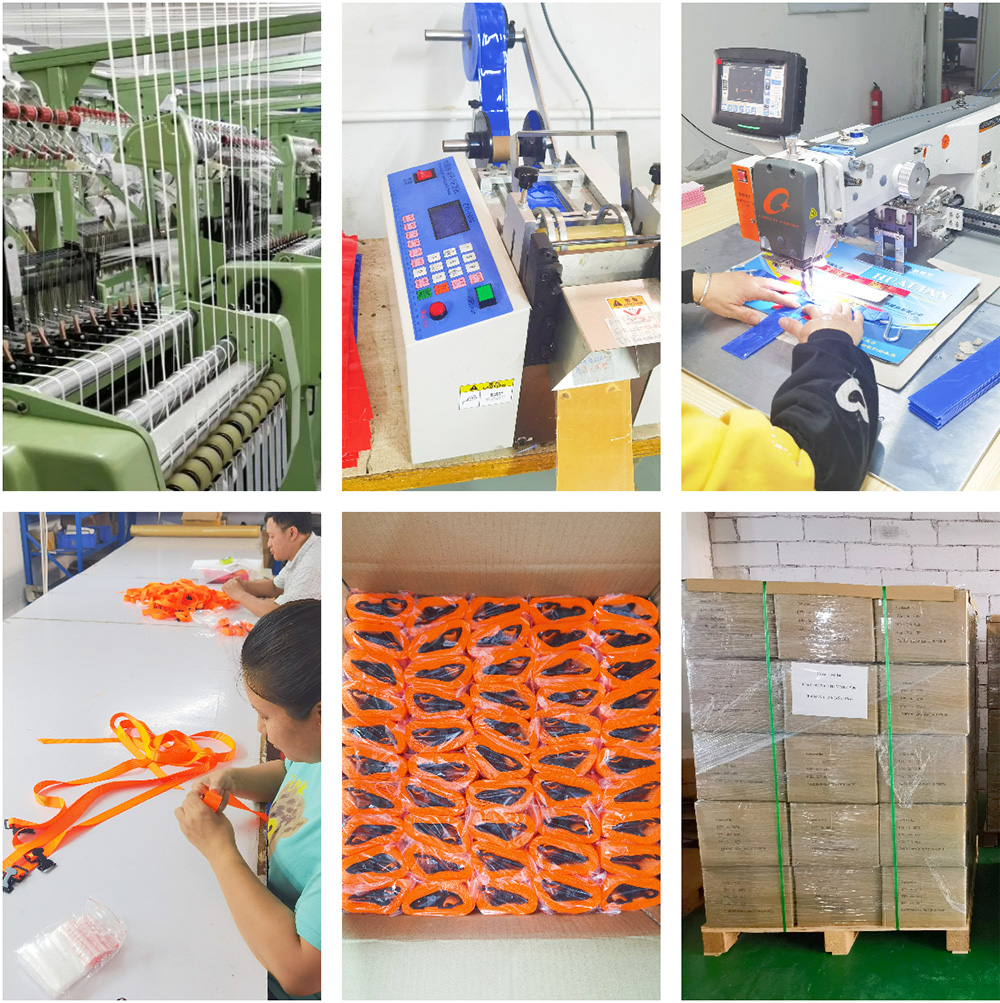The production process of tie down straps involves several steps to ensure their quality and effectiveness in securing objects. Let's delve into the stages involved in creating these essential tools:
Step 1: Material
The first step is selecting high-quality webbing materials for tie down straps. Common choices include nylon, polyester, or polypropylene, due to their strength, durability, and resistance to abrasion.
Step 2: Webbing
The weaving process brings the yarn together to form the webbing structure by different weaving techniques, such as plain weave, twill weave, and jacquard weaving. After that, it may undergo treatments like dyeing, coating or printing to enhance its visual appeal, increase resistance to UV rays, or improve overall durability.
Step 3: Cutting
The webbing is then cut into appropriate lengths, considering the desired specifications of the tie down straps. Specialized cutting machines ensure precise and consistent dimensions.
Step 4: Assembly
The assembly stage involves attaching various components to the webbing strips. These components can include buckles, ratchets, hooks, or cam buckles, depending on the intended use of the tie down straps. The components are securely fastened to the webbing using stitching, bonding agents, or other suitable methods.
Step 5: Quality Control
Quality control measures are implemented throughout the whole production process to ensure that the tie down straps meet industry standards and specific requirements. Inspections may involve checking the strength of stitching, verifying the functionality of buckles or ratchets, and overall product durability.
Step 6: Packaging
Once the tie down straps pass the quality control checks, they are carefully packaged for distribution and storage. Packaging methods may include individual packaging or bundling multiple straps together, depending on customer requirements.
It is important to note that the specific production process may vary depending on the manufacturer and the intended design of the tie down straps. However, these general steps provide an overview of the typical process involved in creating these essential tools for securing and immobilizing objects.

Post time: Jul-27-2023






